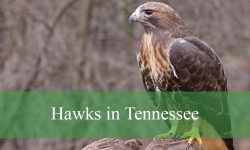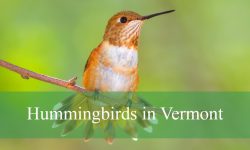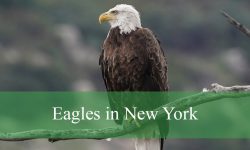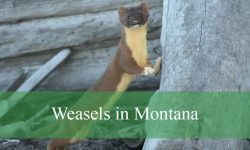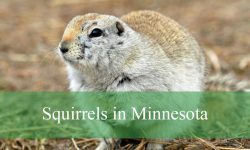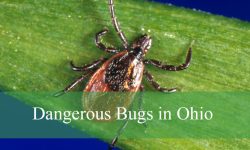Possums in Minnesota are often overlooked yet play a vital role in the local ecosystem. These nocturnal mammals navigate forests, wetlands, and even suburban areas, showcasing remarkable adaptability. Their elusive behavior, unique traits, and scavenging habits make them both fascinating and ecologically significant in the region.
Despite being misunderstood, possums contribute to controlling insect populations and dispersing seeds. They are rarely aggressive, yet their defensive strategies and nocturnal activity allow them to thrive even in Minnesota’s harsh winters. Understanding their habits and ecological role helps residents coexist peacefully with these creatures.
Observing possums in Minnesota offers unique insight into the region’s wildlife. From climbing trees to scavenging for food, their behavior reflects survival strategies perfected over generations. Learning to identify them and appreciate their traits enhances awareness of local biodiversity.
Possum in Minnesota: Identification, Behavior, and Unique Traits
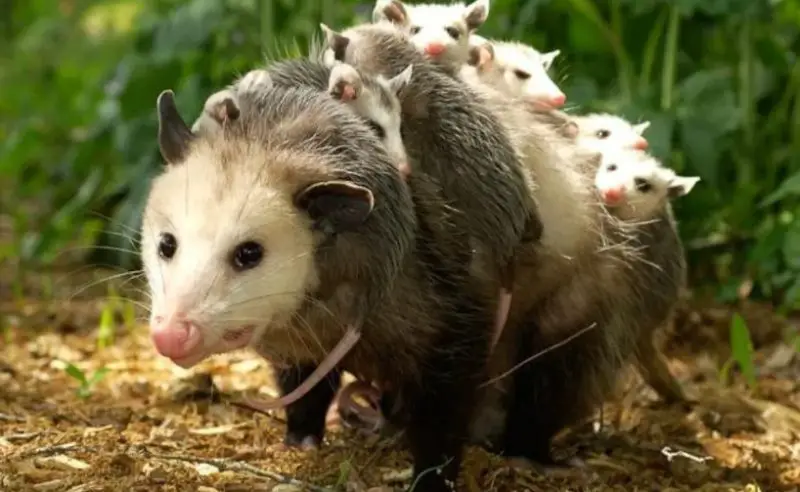
Possums in Minnesota are medium-sized, nocturnal mammals with distinctive grayish fur, prehensile tails, and pointed snouts. These traits make them immediately recognizable to those familiar with local wildlife, though they are often mistaken for raccoons or rats by casual observers.
Possums are highly adaptable animals that inhabit a variety of environments, including dense forests, wetlands, farmland edges, and even suburban neighborhoods. Minnesota’s wide seasonal variations—from freezing winters to warm summers—present challenges that possums have remarkably adapted to, showcasing their resilience and ecological versatility.
Understanding these mammals requires careful observation, as their nocturnal habits and secretive behavior often render them invisible to the casual observer during the day.
Identification of Possums in Minnesota
The grayish-white fur of possums provides excellent camouflage, allowing them to blend seamlessly with tree bark, fallen leaves, brush, and even human-made structures such as fences and wooden sheds. Their bodies generally measure between 15 and 20 inches in length, excluding the tail, which can reach up to 9 inches. The tail is sparsely furred yet prehensile, allowing possums to grasp branches for climbing, maintain balance, and even temporarily hang from objects while searching for food. This trait is uncommon among mammals in Minnesota, making possums particularly agile in arboreal environments.
Other key identification features include small, rounded ears that provide acute hearing, sharp claws for climbing and foraging, and a pointed snout that aids in rooting through soil, leaves, and decaying wood for insects and small prey. Their dark, reflective eyes are adapted for low-light conditions, allowing them to navigate the night efficiently. Observers may notice a subtle shimmer when light hits their eyes, a hallmark of nocturnal mammals in the wild.
The combination of grayish fur, prehensile tail, and slow, deliberate nocturnal movements differentiates possums from other mammals such as raccoons or feral cats. Their climbing skills allow access to tree cavities, attics, and other hidden locations, while their highly developed sense of smell helps them locate food sources that are often invisible to other animals. Possums’ deliberate and careful movements are not signs of slowness but of an evolved strategy to avoid predators while conserving energy during cold Minnesota nights.
Behavior of Possums in Minnesota
Possums in Minnesota are primarily nocturnal and solitary. They typically emerge at dusk to forage, reducing the risk of encountering predators and human activity. Their diet is omnivorous and opportunistic, allowing them to consume a variety of items depending on availability. Insects, worms, fruits, bird eggs, small rodents, and carrion form the bulk of their diet, although in urban areas, possums may also consume pet food or garden produce left unattended. This flexible feeding strategy is one reason possums have successfully adapted to both wild and human-altered landscapes in Minnesota.
During the daytime, possums seek shelter in locations that provide both safety and warmth. Hollow trees, brush piles, and rock crevices are preferred in wild areas, while attics, sheds, and garages may serve as temporary homes in suburban environments. These mammals are meticulous in choosing resting places, often inspecting multiple sites before settling.
One of the most intriguing behavioral traits of possums is thanatosis, or “playing dead.” When confronted with a threat, a possum may collapse, emit a pungent odor from its anal glands, and remain motionless for several minutes. This involuntary defensive mechanism can fool predators into leaving the possum alone, giving it a vital opportunity to escape. Despite such dramatic behavior, possums are generally non-aggressive and prefer to avoid conflict whenever possible. Their calm demeanor, coupled with nocturnal habits, allows them to coexist with larger predators and humans alike.
Possums also exhibit careful foraging strategies. They often explore familiar paths repeatedly, returning to locations with abundant food while avoiding areas where they sense danger. Their movements are deliberate, balancing curiosity with caution, which contributes to their success in navigating both urban and rural environments.
Unique Traits of Possums
Several unique traits distinguish possums from other mammals in Minnesota. Their prehensile tails not only assist in climbing and balance but can also temporarily hold nesting materials or help in grabbing food items. This dexterity is rare among local wildlife and allows possums to exploit habitats that other species cannot access.
Possums also display a remarkable resistance to certain diseases, including rabies, which is uncommon among small mammals in North America. This immunity allows them to safely inhabit areas shared with humans, domestic animals, and other wildlife. Their disease resilience, combined with an omnivorous diet, makes them ecologically valuable, as they help regulate insect populations, clean up carrion, and disperse seeds.
Reproductive behavior is another distinctive feature. Female possums breed in early spring, often producing one or two litters per year. The gestation period is extremely short, about 12 to 13 days, after which tiny, underdeveloped young climb into the mother’s pouch to continue development. The pouch protects the young while they grow and develop essential skills such as climbing, foraging, and navigating the environment. Even after leaving the pouch, juveniles may remain with the mother for several weeks, learning critical survival techniques.
Despite a relatively short lifespan of two to three years, possums’ rapid reproductive cycle and adaptability ensure the population remains stable across Minnesota. Their ability to survive harsh winters, exploit diverse food sources, and navigate both wild and urban habitats underscores their resilience and ecological significance.
Habitat and Adaptation in Minnesota
Possums occupy a wide range of habitats in Minnesota. Forested areas provide hollow trees, brush piles, and fallen logs for nesting and daytime shelter. Wetlands offer abundant insect life and fruits, while suburban areas provide alternative food sources and occasional shelter in garages, attics, and sheds. Their adaptability allows them to thrive in both pristine natural areas and heavily human-altered landscapes.
Winter survival is a critical aspect of their adaptation. Unlike hibernating mammals, possums remain active throughout the cold season. Their gray fur provides insulation against freezing temperatures, and they strategically select nesting sites that offer warmth and protection from snow and ice. Opportunistic feeding behavior allows them to exploit seasonal resources, including fallen fruits, insects, and carrion, ensuring they maintain energy during the harsh months.
Possums’ flexible habitat choices demonstrate their remarkable ecological plasticity. They can shift from wild environments to suburban zones with minimal stress, avoiding predators while maximizing food availability. Their survival strategies, including careful sheltering, opportunistic feeding, and nocturnal activity, exemplify the species’ ability to adapt to Minnesota’s diverse climatic conditions.
Observing Possums in Minnesota
Observing possums requires patience and an understanding of their nocturnal habits. These mammals are primarily active after sunset, and their secretive nature means that casual encounters during the day are rare. For wildlife enthusiasts, focusing on behavior rather than just spotting them can be especially rewarding. Watching possums climb, forage, or interact with juveniles provides valuable insight into their daily routines and survival strategies.
Seasonal changes further influence possum behavior. Spring and early summer highlight reproductive activities, as mothers carry young in their pouches or guide juveniles learning to forage. In fall, possums concentrate on gathering energy reserves, while winter sightings, though less frequent, demonstrate their resourcefulness in navigating snowy landscapes and finding shelter.
Documenting possum activity in natural and suburban habitats contributes to local biodiversity records. Observations can help researchers understand urban-wildlife interactions, habitat use, and population dynamics. Patience, quiet movements, and nighttime observation are essential for a successful and informative encounter with these nocturnal mammals.
When and Where to Spot Possums in Minnesota
For those aiming to actually spot possums, timing and location are crucial. Possums are most active during the night, typically from dusk until a few hours after dark. Their nocturnal lifestyle means daytime sightings are uncommon, except in situations where food or shelter is easily accessible.
Seasonally, spring and early summer are ideal for observing young possums alongside their mothers. Fall is another active period, as possums forage intensively to prepare for winter. Winter sightings are less frequent but possible during milder nights or near sheltered locations such as brush piles, hollow trees, or urban structures that provide warmth and food.
Location also plays a significant role. In natural settings, forests, wetlands, and park edges are prime spots, with possums favoring hollow logs, tree cavities, and dense shrubbery for daytime shelter. In suburban areas, they often visit gardens, attics, sheds, and garages. Observers increase their chances of sightings by choosing quiet areas with minimal human activity, near water sources or food-rich environments. Combining the right time of day, season, and location greatly improves the likelihood of spotting these elusive creatures.
Interaction with Humans
Possums offer several benefits to humans, including natural pest control and carrion cleanup. However, conflicts can arise when they explore attics, sheds, or garbage bins in search of food or shelter. Understanding their nocturnal habits, climbing ability, and attraction to accessible food is key to minimizing problems.
Humane deterrent methods, such as securing trash cans, removing fallen fruits, and sealing potential entry points, help prevent possums from becoming a nuisance. Educating communities about possums fosters coexistence, highlighting their ecological role and reducing unfounded fear. While some residents may be startled by their presence, recognizing possums as harmless, beneficial wildlife can change public perception and encourage wildlife-friendly practices.
Conclusion
Possums in Minnesota are unique mammals with gray fur, prehensile tails, and nocturnal habits. Their behavior, including scavenging, climbing, and playing dead, showcases evolutionary adaptations to survive in forests, wetlands, and suburban areas. Opportunistic feeding, reproductive strategies, and disease resistance enable them to thrive in Minnesota’s diverse environments. Educating residents about possums promotes coexistence and highlights their ecological significance. Observing these elusive mammals provides insight into local wildlife dynamics and the resilience of nature’s nocturnal creatures.
FAQs About Possums in Minnesota
What do possums in Minnesota eat?
Possums are omnivores, feeding on fruits, insects, small mammals, eggs, and carrion. Their opportunistic diet allows them to survive in diverse habitats, including forests and urban areas.
Are possums dangerous to humans or pets?
Generally, possums are non-aggressive and pose little threat to humans or pets. They may defend themselves if cornered but prefer avoidance. Their natural resistance to diseases like rabies reduces risks.
Where can I find possums in Minnesota?
Possums inhabit forests, wetlands, and suburban neighborhoods. They often nest in hollow trees, brush piles, attics, and sheds. Nighttime is the best time to observe them.
How do possums survive Minnesota winters?
Possums remain active during winter, relying on insulated fur, secure shelters, and opportunistic feeding. Unlike hibernating mammals, they continue to forage for food under snow or in urban areas.
What is the lifespan of possums in Minnesota?
The average lifespan is two to three years in the wild. Rapid reproduction and adaptability help maintain population stability despite predation and environmental challenges.

